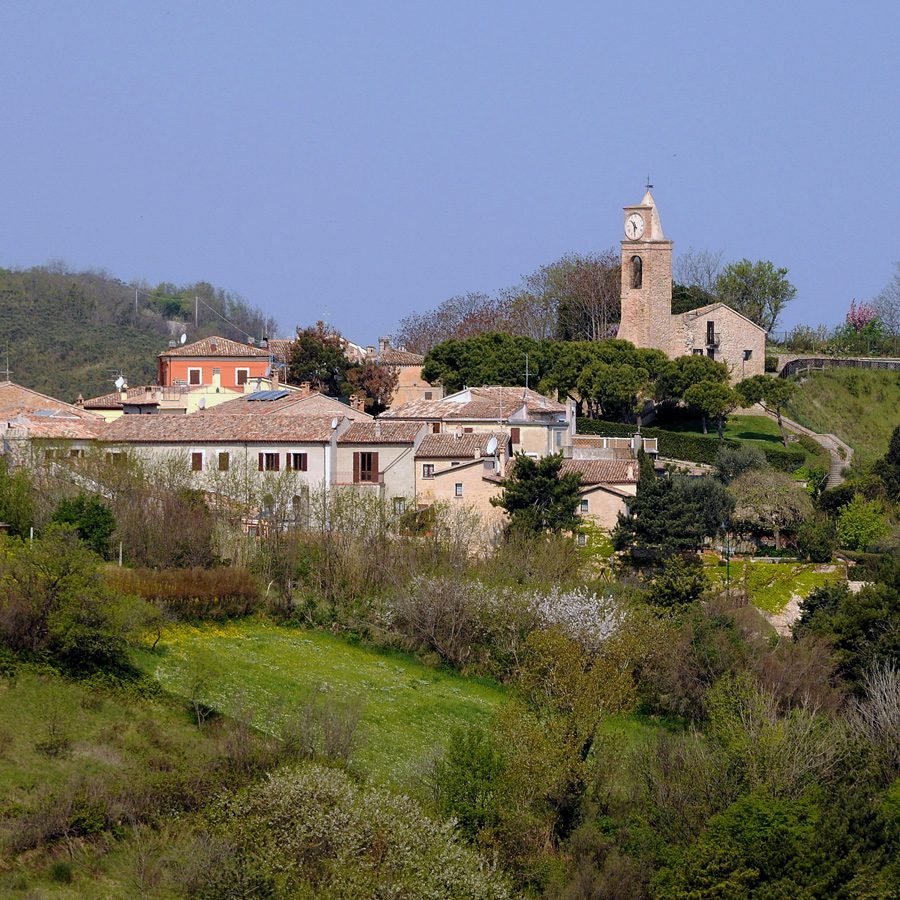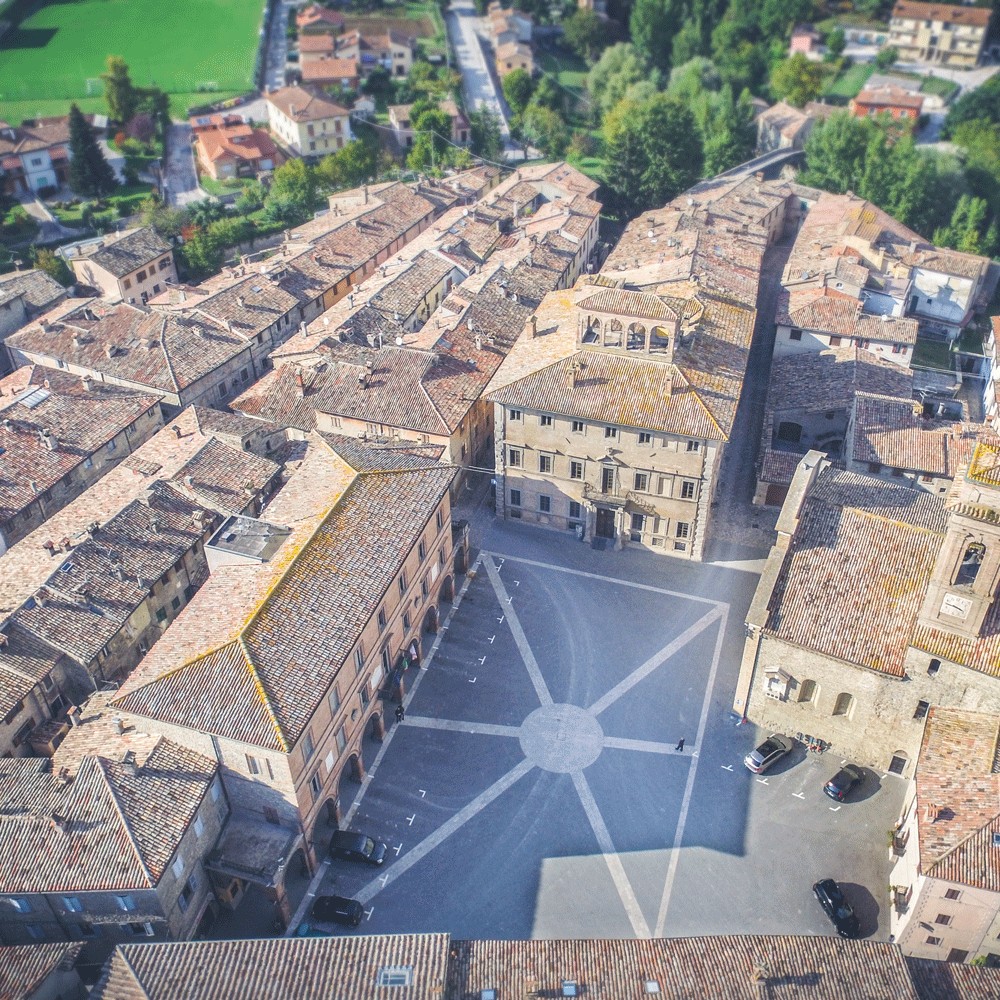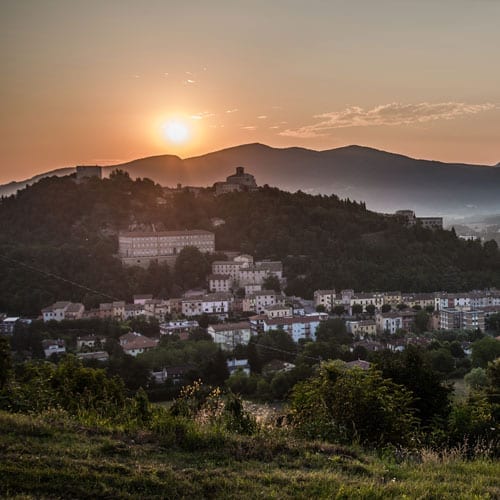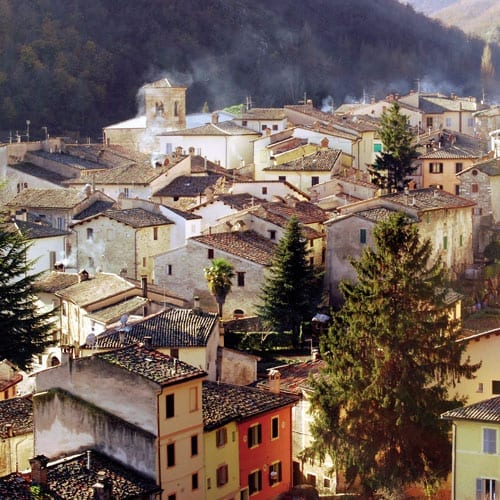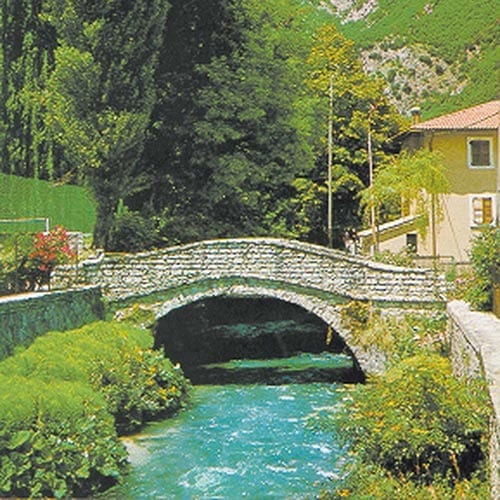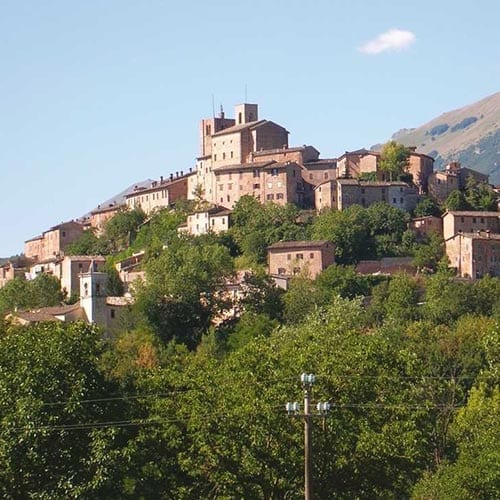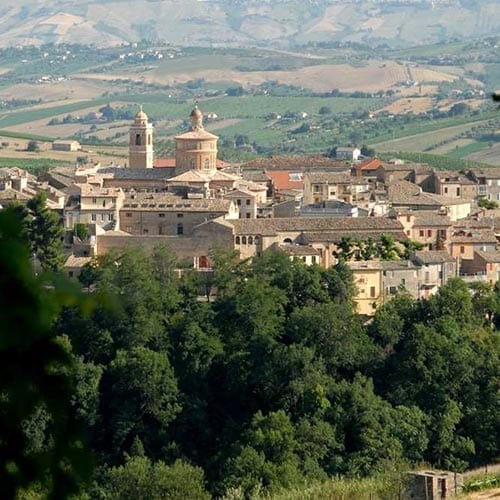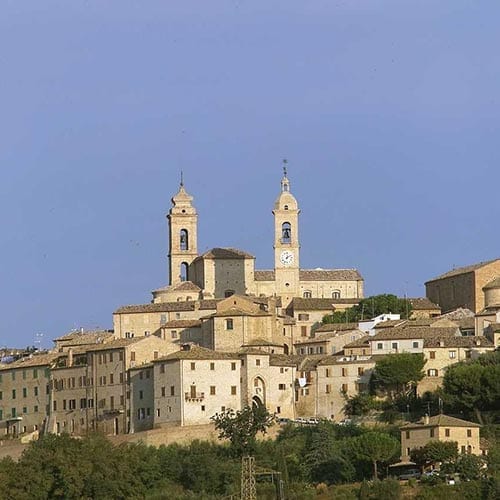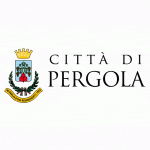 Pergola
Pergola
CITTA’ di PERGOLA MUNICIPALITY
(Province of Pesaro – Urbino)
Altitude
mt. 265 a.s.l.
POPULATION
6200 (4000 in the borgo)
TOURIST INFORMATION
Bronzi Dorati and Città di Pergola Museum
Largo San Giacomo, 1
Ph. 0721 734090 – 0721 7373278
museo.bronzidorati@libero.it
turismo.pergola@gmail.com
www.bronzidorati.com
www.comune.pergola.pu.it
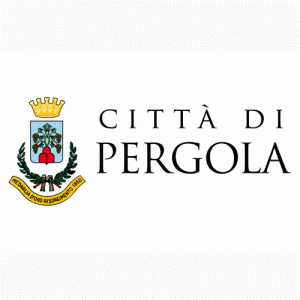 Il nome
Il nome
The toponym traditionally derives from a pergola that adorned the ancient entrance of one of its churches, Santa Maria della Pergola but, according to another hypothesis, Pergola was that territory that could be reached through a “gorge”, inhabited since prehistoric times by Celts, Gauls and Romans.
The landscape opens up on an enchanting scenery: hills and farmhouses, vineyards and woods, churches and ancient villages, in the distance the imposing profile of Mount Catria, at the foot of which Dante stopped. The old town is rich in medieval buildings with stone, pointed arch portals and tower-houses, confirming the importance that the city gained over time. For centuries, it has jealously guarded its appearance with narrow streets and the buildings with the characteristic “doors of the dead”, doors raised above street level, to which they were connected by retractable wooden steps from which an internal staircase started, very steep, to the top floor, so narrow as to allow only one person to walk, which had a purely defensive purpose, because, thanks to their shape, a single man could defend their home from attackers.
The numerous churches have attributed to the City the appellative of “Holy Pergoletta” or “City from the hundred churches”, sign of religiousness and strong traditions.
Pergola is also the city of the Golden Bronzes, the only example of gilded bronze group of the Roman era in the world. The sculptures, for their grandeur, beauty and suggestion, have no equal and are kept in a museum full of unforgettable testimonies.
Pergola still today is nicknamed “the City of One Hundred Churches“, for the many places of worship dating back to the time of the long dependence on the Church State.
The Gothic Church of San Giacomo, dating back to the twelfth century, is one of the oldest: with a rectangular plan, it houses an interesting wooden crucifix of the early ‘400. Not far away, the Church of San Francesco, founded by the Franciscans in 1255 and transformed in the following century, is characterized by a beautiful fourteenth-century portal with a pointed sandstone arch.
The magnificent Cathedral, built by the Augustinian monks in 1258, combines the original Romanesque-Gothic style of the bell tower with the late Baroque interior and the neoclassical facade. The co-cathedral with its three naves and the relic containing the head of San Secondo, a rare example of late Gothic jewellery.
The interiors of three other churches are also baroque: that of the Three Kings in Santa Maria dell’Assunta, that of Santa Maria delle Tinte and that of San Biagio. Not to mention the Church of Santa Maria di Piazza, one of the oldest in the city, with frescoes of the fifteenth century or the Oratory of the Ascension to Palazzolo, which houses frescoes that represent one of the highest moments of fresco painting of the fifteenth century in the Marche.
In this religious itinerary, worth mentioning are the ancient “doors of the dead“. Present in many medieval towns in central Italy, they have ancient origins, probably dating back to the Etruscans. Doors raised above street level, to which they were connected by retractable wooden steps from which an internal staircase started, very steep, to the top floor. Doors, so narrow as to allow only one person to walk, which had a purely defensive purpose, because, thanks to their shape, a single man could defend their home from attackers. Subsequently, when their defensive function failed, they were used to let out, with their feet in front, the deceased from their home, and then promptly walled up again.
It is also worth taking some time to visit the Palazzo Comunale, built to a design by Rimini’s G. Good friends after 1750.
The Museum of the Golden Bronzes and the City of Pergola preserves precious and unique assets, the Golden Bronzes from Cartoceto di Pergola, the only group of gilded bronze of the Roman era existing in the world. Nine quintals of bronze and gold were masterfully forged two thousand years ago and are exhibited in this museum.
The city’s architectural excellence is the Angel Dal Foco Theatre, set inside the ancient warehouses of Monte di Pietà. Particularly interesting is the plan made of mule iron, with three tiers of boxes, stalls and gallery. The reconstruction of the ‘700 dates back to when Pergola was elevated to the rank of City. For this privilege, in fact, it was necessary for the community to have a Town Hall and a Theatre in which hosts a very prestigious theatre season.
Finally, the historical Gardens of the City represent a pleasant and elegant walk in a green lung of the center.
Pergola is a city of history, art and culture, but also proposes a high quality gastronomy. Thanks to its typical products, from the Pergola doc wine to the Visciolato up to the production of black and white truffles all year round, the city stands out as a lively location of events at national level. Among the most important, not to be missed in August, the Historical Re-enactment that, between myth and legend, recalls the arrival of the remains of the patron saints dragged giant oxen who knelt in front of the Cathedral, then there are the National Fair of White Truffle Pergola in October and the CioccoVisciola Christmas on the weekend of the Immaculate.




